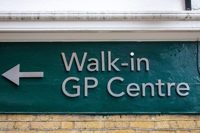
Like the polite Victorian curate’s egg, parts of the new Ten Year Plan for the NHS are excellent…
Plans for “transformation” of Britain’s National Health Service take off and crash with dismal regularity. So it’s not surprising that the Government’s new Ten Year Plan has passed almost unnoticed beyond the Westminster ‘health bubble’.
This is a pity, since all are agreed a plan is desperately needed as public confidence in the NHS falls ever lower. And if massive consultation could produce the answers, this Plan would have done so.
But of course consultation doesn’t usually deliver hard choices, merely more demands on a strained budget. That results in a Plan that ducks the issue of social care and some of the big questions of public finance. Meanwhile striking resident doctors have dominated the headlines.
All the same, the Plan is worth reading. Within the jumble of ideas, there is a repeated emphasis on the use of incentives, for both patients and providers. Since it will take some strong dynamics to get the sclerotic machinery of the NHS working better, this deserves attention.
The Challenge of Incentives
Many different forms of incentives are hopefully alluded to in the Plan. On the provider side, they are attached to pay, the allocation of resources and the distribution of responsibility. On the patient side, there is yet more emphasis on the encouragement of a maintenance of basic fitness and health.
Each of these, however, presents distinct challenges, and there is, perhaps inevitably, not much sign in the Plan that they have yet been properly assessed. The design of economic incentives always needs careful design and trialing, but never more than in the public sector, where the basic market incentive is missing.
This is vividly illustrated by the Plan. Even at the conceptual stage, it is unclear whether the primary aim is to save money, drive productivity, shorten waiting lists, reduce “health inequality” or end the scandals of poor hospital care in such areas as maternity care or A&E. Of course something as monolithic as the NHS can’t have a single objective, but before introducing new incentives it would help to be a little clearer about what they are intended to achieve.
So let’s start with the three declared themes of the Plan: a shift from hospital to community, analogue to digital, sickness to prevention.
From Hospital to Community
The first, although dressed up in patient-friendly language, is clearly intended to save money. Hospital care is more expensive than “community services” (which is also why social care reform to end unnecessary hospital stays is critical).
What is less clear is how the Government intends to incentivise such a shift. And some of the simplest (and even best) ideas in the plan, such as allowing consultants to send you straight to scans and tests rather than tracking back through your GP, point in the opposite direction. It doesn’t matter whether you call it a “community” or a “hospital” MRI unit, consultation must at least have told the planners that what the patient wants is just an appointment. Quickly.
Going Digital
The second theme of the Plan is simply (and rather literally) a no-brainer. You don’t need to “re-imagine the NHS” or develop “a new operating model” to bring an end to ridiculously slow and siloed information flows. The NHS app is up and running and simply needs to be properly connected to all parts of the system. No retailer would expect customers to break into a round of applause for telling them that’s what’s intended.
Shifting from Treatment to Prevention
The third theme is the big dream of moving from “sickness” - by which the planners presumably mean “treatment “- to “prevention”. This echoes back to the founders of the NHS. Aneurin Bevan believed that as universal care improved people’s health, the costs of the NHS would stabilise. Sadly, he soon came to understand it wouldn’t.
In theory, prevention is not just better than cure, but cheaper. In practice, the amounts you can spend on prevention are limitless, and demand even more unconstrained than for treatment. While few people actually enjoy having an operation, free gym membership sounds very nice, even if you don’t bother to go there. So wellness incentives for patients need extremely careful monitoring for their cost-effectiveness.
Provider Incentives: Pay, Responsibility, Reputation
Woven into these themes are hints of new performance incentives for providers yet to be fleshed out. They fall into three categories:
• financial rewards (pay for performance)
• responsibility rewards (bigger budgets, wider remits)
• reputational rewards (league tables)
None of these is easy to design. Performance pay is hard enough to make effective in the private sector, but that still looks simple compared with designing schemes tailored to the multiplicity of objectives in the public sector.
Variable pay is extremely hard to negotiate with unions and even at senior management level fraught with difficulty. Targets are bound to be set across a range of indicators (e.g., patient safety, financial management, patient throughput), and payouts are notoriously hard to justify. Sod’s law will inevitably dictate that managers of hospitals that have been hit by scandal get a bonus because they have met most of their (other) targets, with accompanying outcry in the media.
Putting new pay schemes in place requires a deep understanding of motivation for both practitioners and administrators. There may be much more to be gained from removing minor irritations and disincentives than from adding performance pay on top. For example, in one direction Government has moved in exactly the opposite to the Plan’s declared objective, by removing from the highest-performing medical students the choice of hospital, or even region, for their final years.
The well-meaning objective may have been to force some of the best to head for distant or unpopular regions, but the result may be to drive some of the very best abroad. Far better to divert extra resources to such regions and build up centres of excellence that might attract (as in some parts of the United States), than seek to impose a Stalinist direction of labour. And all too predictably, a realisation that this was not the best approach has now led to an allocation scheme of such complexity that fifth year students spend an inordinate amount of time trying to work out how to game the system.
League tables and responsibility rewards are a clearer attempt to import private-sector disciplines, as is the willingness to contract with private-sector providers. These elements echo the emphasis on patient choice first introduced by the Patient’s Charter thirty years ago. As then, there is an emphasis on patient choice, trying to give the NHS’s patients a smidgeon of the consumer power customers can wield in a well-functioning market.
The difficulty, in a “market” in which demand greatly exceeds supply, is to make this anything more than Hobson’s choice - or a situation where there are more options, but all of them are awful (wait a year for my operation, or have it done 500 miles from home). Nonetheless, there are signs in the Plan of an openness to ideas where there can be quick wins, injecting at least some elements of choice rather than provider dictation.
Transparency Through League Tables
Likewise, the emphasis on league tables shows a welcome commitment to transparency. But it’s never easy to make these tables meaningful, and it will take strong-minded planners to create measurement scales that are not cluttered up with secondary information, beyond what patients really want to know. (That is: Is it safe? Is it successful? )
Benchmarking and Best Practices
Dig deep into the new Plan, and you find the most interesting, ambitious and potentially most effective proposals for new incentives: to relate the distribution of resources to different institutions on their performance in relation not to some basic quantitative formula but to the performance of the best in class.
This echoes many schemes designed to introduce “benchmark competition” between privatised utilities that were natural monopolies in their areas, allowing them profit margins only achievable if they performed as well as the best. It shows a welcome openness to the stimulus of competition, coupled with a firm commitment to the use of the private sector where needed, which are bold enough to make this Plan worth a welcome.
Getting the design right will take a lot of careful incentive design, trialing and measurement. It’s probably not the best moment to cite the water industry as one where many such benchmark competition ideas were developed, but if the failings of the industry do not vitiate the principles behind such designs, they show how easy it is for things to go wrong.
On the plus side, there are many more providers in the NHS and so there is more scope for success to lead to a transfer of responsibilities from the worst to the best performing. This a theme that runs strongly through the Plan. Getting such corrective mechanisms to work effectively will be critical, and depend on careful design. Draining poor performers of investment funds might mortify their managers, but would also have a serious impact on their patients.
The fundamental difficulty involved in injecting incentive-driven disciplines into the public sector is that the private sector solutions to failure (lower profits, takeover, bankruptcy) are not easily available. Even more than in education, the management of failing institutions is critically important. For while it is bad enough to have your child in an underperforming school, it’s still worse to have your baby in a maternity hospital with record neonatal mortality.
Guest Author: Baroness Sarah Hogg, Former Frontier Economics Chairman



